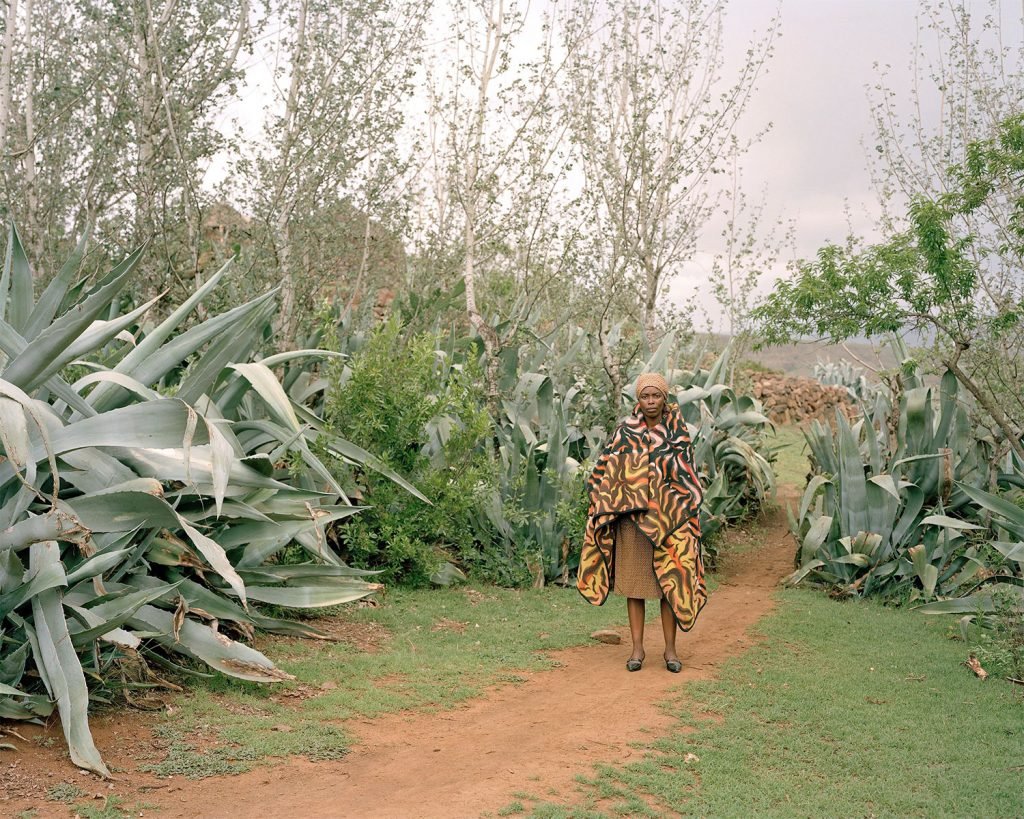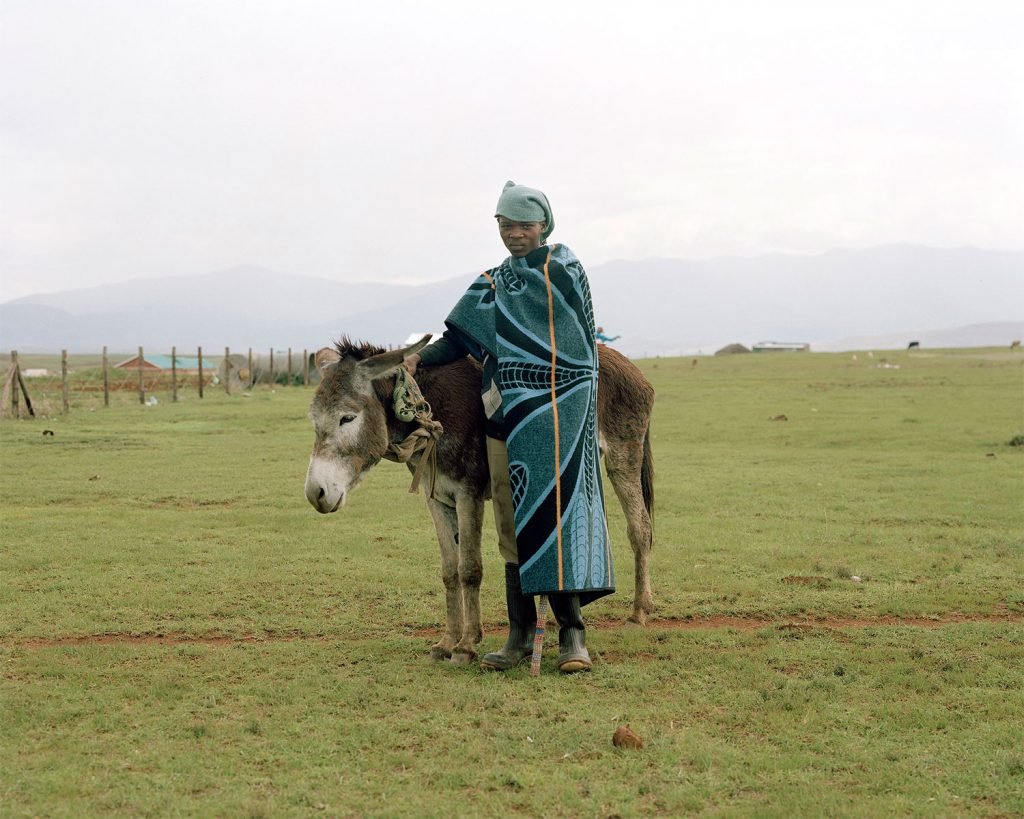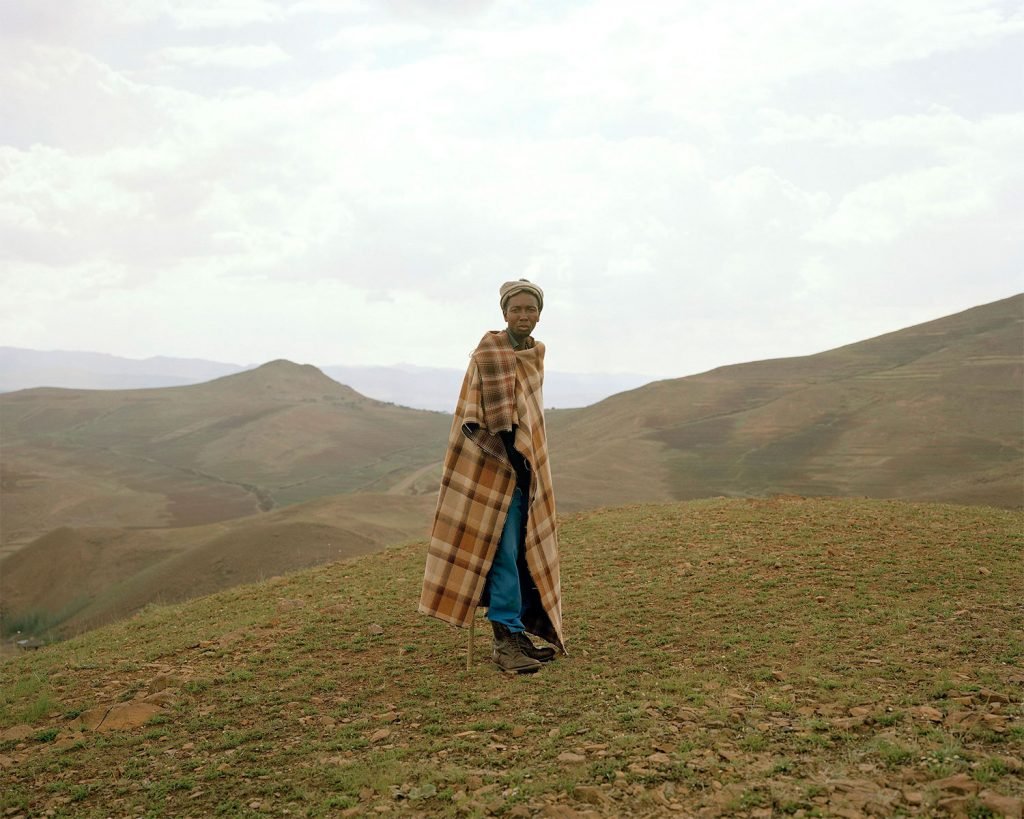“Kobo”, Lesotho, 2013
The Swiss photographer Joël Tettamanti (*1977) has from the very beginning specialized in a very specific theme. : the transformation of landscapes as a result of human intervention. Traveler and photographer thus takes interest in these human imprints -principally architectural ones- wherever they are: from Switzerland to Togo, while passing through Mexico, China, Israel, and Greenland. Initially only a marginal element, the portrait has become increasingly important device in his work, especially from 2010 onwards.
Already in 2006, Joël Tettamanti stated. “With time, my interest in portraits has grown. I find that I encounter the same recurring elements as in landscape”. Recently, he affirmed that he felt “technically ready” to meet the challenge of taking portraits using a film camera for which preparation requires considerable time. It is indeed far more difficult to take a portrait than to capture a building or a landscape, the latter two being by definition immovable elements. He has to be attentive to the general attitude of the sitter, to the position of each part of the body, to the gaze and demeanor… “he treats the portrait in exactly the same way as he treats an architectural element or a landscape”. As an “object”, Joël Tettamanti manipulates the person whom he has chosen to photograph in order to achieve an image true to his own gaze. Just as with Rineke Dijkastra, he keeps his distance, overseeing a pose which is not a pose. But he preserves the context of the initial meeting with the sitters and never uses the flash (he travels with a simple 4/5 camera and a reflector).
Tettamanti approaches all these subjects with the same attitude: not as an expert but rather as an informed observer, who offers us his very personal and subjective point of view.
The portraits of this series entitled “Kobo” show the Basotho people, who represent the majority community in the independent kingdom of Lesotho, which is an enclave within South Africa. Joël Tettamanti mostly depicts them standing, often on their horses. “Kobo” is his second photographic series on Lesotho. The first, entitled “Maloting” dates back to 2004, when he was commissioned by an NGO to produce a reportage on a hospital in the region.
However, his first contacts with the region predate both series. His family’s past is closely linked to the continent: he was born in Cameroon and spent his childhood in Lesotho. He is familiar with the land and its people, these characters who “seem to appear from nowhere. Draped in their covers, they lose themselves in the landscape”. However, it was only in 2013 and after observing a sartorial change in the Basotho people that the photographer decided to document them, with their unique covers.
The portraits in this series focus on a distinctive trait of the community: their covers (called “kobo” in the Sesotho language). Even as the Basotho community fought them to preserve their independence, the colonizers nevertheless managed to divest them of their original clothing during the 19th century. European manufactured garments slowly replaced animal skins that prevailed before. These covers protect their wearers from the rain and the cold, but they offer much more. The heat they produce is the emblem of transformation: “to be covered is to be fermented, it is the passage from one state to another”. The covers are indeed used to prepare beer or tobacco, and they serve as gifts during key rituals: the rites of passage, marriage, and the birth of the first child. They are thus social markers, and every motif imprinted on them is replete with meaning (the corn cob is a symbol of fertility, the vertical lines on the edges symbolize growth and prosperity) as are the ways of wearing them, which vary according to age and gender (the covers open to the right when worn by men and to the front when worn by women, while recently married women gird their covers).
In “Kobo”, the imprint of man on man is at the heart of the photographs. These covers which serve as a sort of facade to the human body and stimulate this architectural photographer are not alien to him. Given that the region is under populated and underbuilt, this attachment to “the human presence in the landscape” obviously expresses the photographer’s own interests. But beyond this, the disappearance of these covers and the loss of their symbolism meant that it was time document this phenomenon. What was once a national dress is now worn only in rural and mountainous areas, and it will soon pass into folklore.
Perhaps the next time Joël Tettamanti brings back photographs from the mountains of Lesotho, we will find the Basotho people dressed in Gore-Tex, in line with the clothing of the new colonisers of the summits of Mount Kilimanjaro or those of the Himalayas.
Hélène Joye-Cagnard
Director of Biel/Bienne Festival of Photography
–
website: Joël Tettamanti
Instagram: joeltettamanti
Facebook: Joel Tettamanti
–
copyright © Joël Tettamanti, all rights reserved
–
















